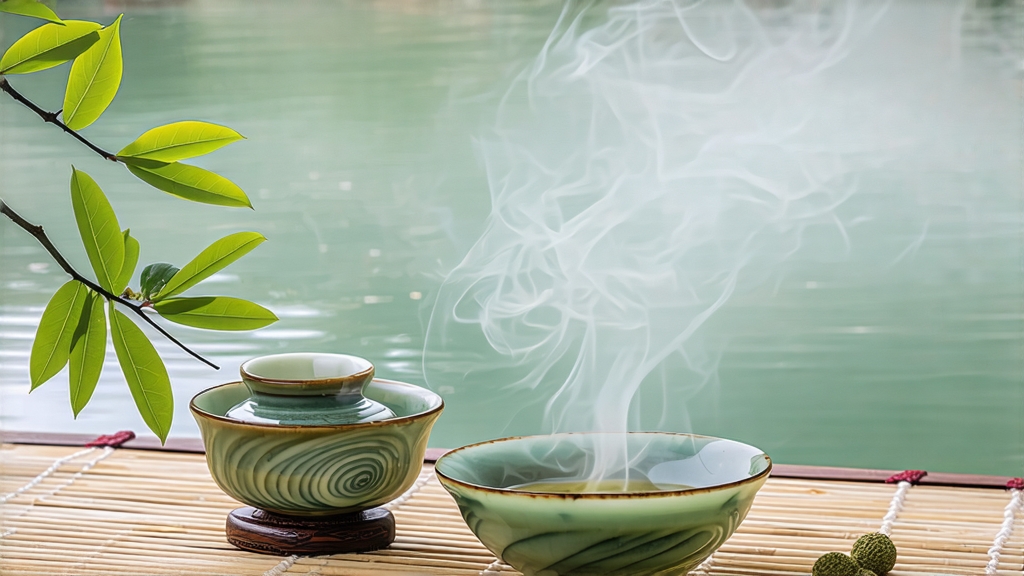
Tucked into the mist-laced hills that cradle China’s vast Lake Tai, Biluochun—literally “Green Snail Spring”—is the quietest celebrity of the green-tea world. To the uninitiated it looks almost decorative: tiny jade spirals no larger than a fingernail, downy as peach fuzz, smelling more of fresh orchard than of leaf. Yet once hot water meets these curls, they release a fragrance so layered—white peach, apricot blossom, cucumber skin and a trace of marine air—that poets of the Tang dynasty called it “frighteningly aromatic.” This essay invites the international reader to travel from Tang court verses to a modern tea garden, tracing how a single bud becomes a cup of liquid spring, and how you, in your own kitchen, can coax that spring to life.
-
A leaf born between fruit and flowers
Biluochun’s recorded history begins in 1675, when a Kangxi-era monk presented the curled tea to the emperor. Kangxi, dazzled by its taste and its resemblance to a snail shell, renamed it from the rustic “Xia Sha Ren Xiang” (“Scary-fragrant”) to the more elegant “Biluochun.” Yet the plant had been growing for centuries along Dongting Mountain, an island in Lake Tai famous for loquat, plum and tangerine orchards. The tea bushes, interplanted among fruit trees, absorb floral volatiles all winter; in March, when lake vapors rise and bend the sun into soft gold, the buds emerge already perfumed. No other Chinese green tea enjoys such an arboreal neighborhood, and the flavor is the proof. -
Micro-terroirs within one mountain
Today the appellation is protected; only leaves picked within Dongting East and West Mountains can legally claim the name. Within this micro-region, gardens differ by altitude, slope aspect and soil quartz content. The highest plots, reachable only by stone steps, yield “Mingqian” buds (picked before the Qingming festival) that are pale jade, needle-slender and worth their weight in silver. Mid-slope bushes give “Yuqian” leaf (picked before the Grain Rain), slightly broader, grassier, yet still spiral-perfect. Lakeside terraces produce a later harvest that local drinkers cherish for its fuller body and lower price. Knowing these gradations helps the buyer avoid counterfeits—vast tonnage of Sichuan or Guizhou leaf is rolled into counterfeit spirals each spring. -
The hand that kills green without killing scent
Within minutes of plucking, the buds are carried in shallow bamboo baskets that allow gentle ventilation. The first craft step is withering—no sun, just shade and breeze—for two hours, until the leaf loses its “green bite” aroma. Next comes the only firing Biluochun ever receives: a 150 °C copper pan, brushed with local pomelo peel oil to season the metal. A master maker, usually a woman in her fifties whose palms are leathery from decades of heat, tosses 250 g of leaf with a rhythmic clap-clap-swirl that lasts exactly six minutes. The motion both “kills green” (enzyme deactivation) and shapes the curl; fingers press the bud against the pan wall for one second, release, repeat—300 times. Too long, and the down burns; too short, and the leaf oxidizes later in storage. When the leaf temperature drops to 60 °C, she rolls it on a bamboo tray for eight minutes, coaxing the spiral and releasing floral notes. A final gentle re-heat at 80 °C sets the shape and moisture at 5 %. From 5 kg of fresh bud emerges 1 kg of finished tea, each curl containing roughly 28,000 young hairs. -
How to brew the snail so it uncurls gracefully
Western brewers often treat green tea like black: boiling water, five minutes, mug. Biluochun punished such brusqueness with bitterness. Instead, think of the leaf as a shy dancer who needs the right music. Use 3 g for 150 ml, water cooled to 75 °C. A tall glass or a gaiwan lets you watch the performance: the spirals sink, then rise like green comets, spinning slowly until they stand needle-straight on the bottom—tea sommeliers call this “the forest standing up.” First infusion: 45 seconds,